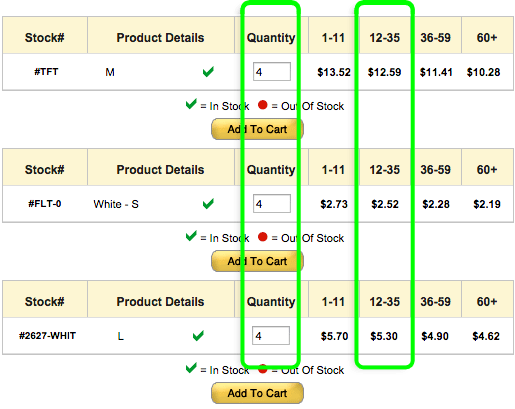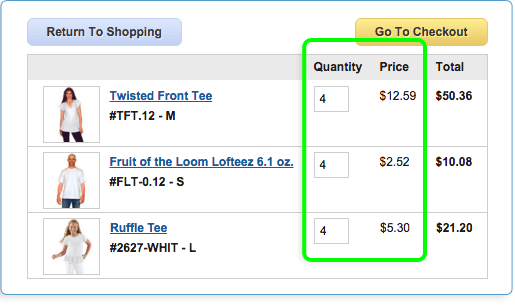Our Newest Ice Dye Fiber Reactive Dye Colors!!!
Developed specifically for spectacular splits when ice dyeing! These were done just like our other swatches, DOI (dye over ice) in the muck using our CPC fabric.
PR201 Kaleidoscope Eyes (T) - Prepare to see turquoise, red, green, purples, blues, yellow, and browns.
PR202 Alchemist (T) - This color will transform to hues of purple, teal, blues, and greens.
PR203 Phoenix Flame - Splits into a range of reds, oranges, yellows, greens, and burnt ember browns.
PR204 Interstellar - Deep purples, blacks edged by warm coral red tones.
PR205 Wild Thing - Shades of green, earthy brown tones, with pops of yellows, pinks, and blues.
PR206 Dragon's Heart (T) - Splits of bright greens, yellows, and blues.
PR207 Black Ice - Splits into shadowy shades of purple, gray, and blue. Hints of red and yellows hide in the folds.
PR208 Warrior Princess - Splits bloom into pinks and purples with clusters of green and blue.
PR209 Avalon (T) - Dominated with blue, purple, and green gem like splits.
Keep in mind these colors were specifically formulated for ice dyeing. They can be used for solid color dyeing at 2%OWG, but results will vary because of the complexity of the mix. Approximate solid hues are shown at the bottom of each swatch above.
Use all of these the same way as any of our other Fiber Reactive Dye colors, for ice dye, tie-dye, solid color, and more!
What's the difference between a pure color and a mixed color? Find out here!
Dharma's Fiber Reactive MX Dyes FAQ
Question:
What makes Fiber Reactive dyes unique from other dyes? What are all the different ways to make it permanent ("fix" it) on cellulose, and on protein.
Answer:
Fiber reactive dyes, like Procion MX, bond with the fiber at a molecular level, becoming chemically part of the fabric. On cellulose soda ash is the primary fixer. On protein you can use soda ash,but it can damage silk if you soak it for long periods of time. We also recommend using less soda ash for tie dye and tub dyeing. (Let the tie dye sit for a shorter period of time, ie: 4 hrs.) Also, colors may shift on silk. Blue does not combine well with silk, causing all mixes with blue in them to shift toward the other colors in the mix, ie black goes brown or maroon, purple goes raspberry, forest green goes chartreuse, etc.. Vinegar or baking soda can be used with silk as a substitute for soda ash. They require heat for vat dyeing and steam setting for direct application. Some folks use the microwave in creative ways. Procion is not highly recommended for wool as many of the colors break down under the high heat that wool needs in order to dye properly.
Question:
I'm a novice dyer and I'm having trouble with one of the Procion MX dye colors in a dyebath situation. The color is not what I expected. What are the variables that can help me find out what the problem is? When is the problem "fixable" and when is it not?
Answer:
What are you dyeing: cotton, linen, hemp etc.? * What color is it before dyeing?
* What color did you buy?
* Do you have hard water?
* How much does the fabric weigh?
* How much water did you use and how much salt?
* Is the salt plain or iodized?
* How much dye did you use?
* What temperature is the water?
* Did you follow the directions accurately?
* Is the color too light? Dye again
* Is the color too dark? Discharge or bleach and then dye again. This may require a change of color choice.
* Colors are spotty or streaky? Not enough room in the dyebath or not stirred enough. The garment or fabric possibly not totally clean before dyeing. Dry chemicals and salt not dissolved well before entering the dyebath. Solution? See Color too dark.
* Wrong color entirely? Over dye for a different color, or see Color too dark.
* Most problems can be fixed if you are willing to take the extra time and effort.
Question:
Why is mixing dyes to achieve desired colors different from mixing pigments? When looking at dyes or paints, how would you determine what the "primary colors" are (if the catalog didn't tell you). If I want to mix all of my own colors of procion mx dye, how many should I get and what colors would you recommend?
Answer:
Dyes are transparent, pigments are not. Pure colors in dye (primaries) are colors that cannot be mixed from other colors but can be used to create a variety of colors. Primaries in pigments are generally pure colors. Procion lemon yellow, fuchsia and turquoise are the primaries. Pigment primaries are yellow, true red and true blue. To mix all your own colors, we would recommend lemon yellow, fuchsia and turquoise, with the addition of navy, cerulean, cobalt and sky blues. Include golden yellow, fire red, scarlet, chinese red and new black. With the possible choices of maroon brown and deep orange. All fourteen colors should give you plenty of options.
Question:
Which is the best fiber reactive black dye to use?
Answer:
We have 5 black fiber reactive dyes, each with a different color cast. They all work well in direct application methods like tie-dye where the fabric is kept moist long enough for the dye to develop full depth. You will see, however, some differences depending upon which one you use and your particular situation and techniques. When vat-dyeing (when you are dyeing a solid color shade) there are also differences:
#200 Raven Black- NEW! vat dyes with a deep blue/purple cast and edges are blue/purple in tie dye. Of the 3 blacks that work in cooler water, this one gives the deepest black in tub dyeing.
#44 Better Black-vat dyes with a blue cast and edges are blue/green in tie-dye.
#300 New Black-Vat dyes with a blue cast and edges are blue/pink in tie-dye.
#39 Black - our oldest original black, was never as good as the newer blacks, and unfortunately we need to discontinue it due to lack of sales. Will still be available for special order in quantities of 5 lbs and up.
#250 Jet Black - This is the most concentrated of all the blacks and gives the deepest black when used in vat dyeing with HOT tap water (130-150F degrees). If you use with cooler water, as with batik, can come out anywhere from grey to pea green! Can only be used in tie-dye if you have a way of heating it while it "cures", like covering your tie-dyes with plastic and then an electric blanket or curing under black plastic in the hot sun. Edges are green in tie-dye.
#275 Hot Black - NEW! - Also best tub dyed in hot (150° to 180°F) water, like the #250, which it was replacing when #250 was temporarily unavailable. Now it is a less expensive alternative. Tub dyes with a deep but bluish black cast on cotton. With Soda Ash on silk is a deep blackish brown, with vinegar on silk, came out black in our tests and a less deep shade of black on wool. #250 Jet has never come out black on silk or wool. This is the ONLY Fiber Reactive black that works on silk! Tie-dye came out really black for us in warm ambient room temp of 80°F or more! At cool temps it comes out more blueish. If you are looking for a different black, give it a try.
Black is a tough color to get. You have to use a lot of dye and in vat dyeing, you need to double the salt. We recommend our new Raven Black or a 1/2 and 1/2 combination of #44 and #300 for the blackest black in tie dye.
Question:
How long do the dyes last?
Answer:
Stored closed in a cool dry place, the dye powder can last for several years but it will get gradually weaker. Every color is different so do a test if the dye has been stored for a few years. Once the dye powder is mixed with water it should be used within 3 days for the best, brightest results but some colors work fine for up to 2 weeks. If the dyes are combined with soda ash, they weaken FAST - they may last for an hour or so - again each color is different. Heat and moisture will make both the liquefied and the powdered dyes get weaker faster. Store them cool and away from moisture. Test first, if in doubt!
Question:
What does the Soda Ash do in a dyebath?
Answer:
When you add salt and dye to the dyebath along with the fabric the absorbed dye is locked in the fabric so it will not wash off. The color becomes permanent by adding a solution of dissolved soda ash to the dyebath raising the pH of the water. This allows the dye molecules to react chemically with the fiber molecules. It takes about an hour for this reaction to occur fully and set the dye.
Question:
What does the salt do in a dyebath?
Answer:
The salt helps the dye stick to the fabric. The greater the amount of salt used, the higher the absorption and the deeper the color will be.
Question:
What is Afterfix and how do I use it?
Answer:
Afterfix sets the Procion Dye in the fiber after you have painted the dye on. Just mix the dye with water and a little thickener and paint with it on your fabric. When it's dry cover the painted area with Dharma's Afterfix by painting it on over the dye. After an hour, wash out the Afterfix and the excess dye.
Question:
What does Glauber Salt do?
Answer:
Glauber Salt improves the yield of Turquoise in that it gives more intense color. Use it in place of and in the same proportions as plain salt when dyeing solid shades of Turquoise or colors mixed with Turquoise.
Question:
What is Ludigal?
Answer:
Ludigal is a mild oxidizing agent that helps to prevent dyes from decomposing during fixation.
Question:
What is a fiber reactive dye and what does this mean?
Answer:
Reactive dyes take their name from the fact that they chemically react with the fiber molecules to form a dye-fiber bond. This strong bond between the dye and the fiber imparts excellent wash- and light-fastness. These dyes require two auxiliaries; first salt which acts as an electrolyte that reduces the solubility of the dye. If the dissolution of the dye is controlled in this way a more even dyeing will take place as the dye will be absorbed in the fibers at a steady rate, rather than all at once. The second auxiliary required is soda ash which increases the pH of the dye bath which enables the dye to react with the fiber molecules and fix onto the cloth.
Question:
The dye instructions for Procion Dye tells me to use various amount of salt, urea and oil. What are these additives for?
Answer:
Salt is used in the dyeing process as an electrolyte that aids in the absorption of the dyes into the fabric. Urea is a "moisture drawing" agent which keeps the fabric damper longer during the fixing process, thereby making for deeper, brighter colors. Oil, such as calsolene Oil is a wetting agent used when dyeing tightly woven fabrics for increasing the evenness of dyeing.
Question:
Can I dye wood or reed?
Answer:
Yes you can. First be certain there is no residue or finish on the wood or reed to prevent the dye from seeping in. Determine the amount of water needed to cover the material. For each gallon of water add 1 TBL. of Procion dye (pre-dissolved) and 1/2 cup plain salt. Mix thoroughly. Put material to be dyed into dyebath and turn frequently for 20 minutes. Add 1/3 cup of Soda Ash for each gallon of water used. (Pre-dissolved in hot water and add slowly). Leave in dyebath for up to 2 more hours or until the desired shade is reached. Rinse under running cold water to remove excess dye and dry.
Question:
What is the Cold-Batch Method? How do I dye using this method?
Answer:
The Cold Batch Method:
For applying the dye directly onto the fabric.
Excellent for the Dye painting, Serti technique on silk and Ikat warp painting on wool or cotton as well as just painting.
The following method for using Dharma Fiber Reactive Procion dye is one of the best ways to paint the dye directly onto the fabric. The dye can be thickened with DyeHouse Thickener and used like a fabric paint or the thickener can be left out for water color and wash effects and for the French Serti technique of painting on silk. This method does not require any pre-treatment of the fabric, but the fabric must be "cured" after dyeing, and after mixing up the dye, it must be used up that day.
The first step is to make a cold batch chemical water which can be stored a month or more in the refrigerator. (Make sure it's sealed and labeled!)
The chemical water is made by mixing the following ingredients together:
1. 3/4 cup Urea (dissolve in hot water if necessary)
2. 1 quart water (add a little Water Softener if needed)
3. Add Thickener (sodium alginate) gradually to suit your use, from a tsp up to 4 tsp. Start with one tsp and add more very gradually while you stir to avoid lumps. Allow to set for 2 hours or over-night as it will continue to thicken.
Pour off the amount of chemical water you need for one color (for ease of measurement use 1 cup increments).
To each cup of chemical water add:
1 tsp. Soda Ash Fixer (be sure it dissolves)
Dye to taste (try a pre-dissolved concentrate and drip & stir until color is right).
Do the above for each color you intend to use. Don't mix more than you need for one work session as the addition of the Soda Ash Fixer commences the chemical action and it begins to set, the mixture gradually loses strength and four to six hours later is about half exhausted.
Using the freshly mixed colors paint or print directly onto the fabric.
Let it dry until damp, cover or wrap in plastic or otherwise stop the drying process and let sit for:
12 hours for pastels
48 hours for deep shades
Rinse in running cold water then wash out excess dye using Synthrapol and let dry.
Question:
Which dyes work best on cellulose, silk and wool?
Answer:
Procion® MX - For painting or tub dyeing. Dyes the cellulose (cotton/hemp) like the color chart. Often the protein(silk) comes out a different color, especially colors with blue in them-most of the blue will be absent on the silk- so for example, with #18 deep purple, you would get purple pile (the rayon) and raspberry backing (the silk) on devore velvet. Very cool!! Careful, soda ash is hard on the silk. Limit the time of exposure, or use baking soda instead, and steam, microwave or simmer on the stove.
Procion® H -For painting. Dyes the cellulose and the protein the same color.
Acid Dye for Wool and Silk - For tub dyeing. Dyes the silk really well, stains the cellulose a much lighter shade.
Question:
What's the difference between Dharma Dye Fixative, Retayne, and Dharma Afterfix.
Answer:
Afterfix is Sodium Silicate, a liquid with the consistency of honey. It is an alkali like Soda Ash (Sodium Carbonate) or Baking Soda, only a liquid. Its use is in the "fixing" of Fiber Reactive Dyes, the creation of an alkali environment in which the cellulose and the dye are able to permanently bond together. In vat dyeing, the Ph of the liquid in which the fabric is submerged is changed to about 10.5 at an appropriate point by the addition of soda ash. Afterfix is used by painting it on the fabric over the painted on dye thereby creating a kind of tiny alkali dyebath around each thread.Dye fixatives are cationic agents that work by bonding to the dye molecules within the fiber matrix and "bulking them up"; this "swelling" of the molecule traps it in the fiber and thus makes it significantly more fast. Given this mechanism, dye fixatives are useful with a wide variety of dye types (basically anything that penetrates the fiber matrix and can be wedged there). The amount used is determined by the amount of fabric (and thus the number of dye molecules that need to be bulked.
Dharma Dye Fixative is an industrial "Fixing Agent" used in the dyeing industry as an after-treatment of reactive and direct dyeing. It is intended to improve washfastness, fastness to seawater and perspiration, prevent dye migration during dyeing and improve crockfastness. It is used by rinsing purchased or dyed fabric for 15 minutes in a solution of cool water and about 1 oz. fixative per lb of fabric.
Retayne is also a "Fixing Agent", similar to the Dharma Dye Fixative.










































































